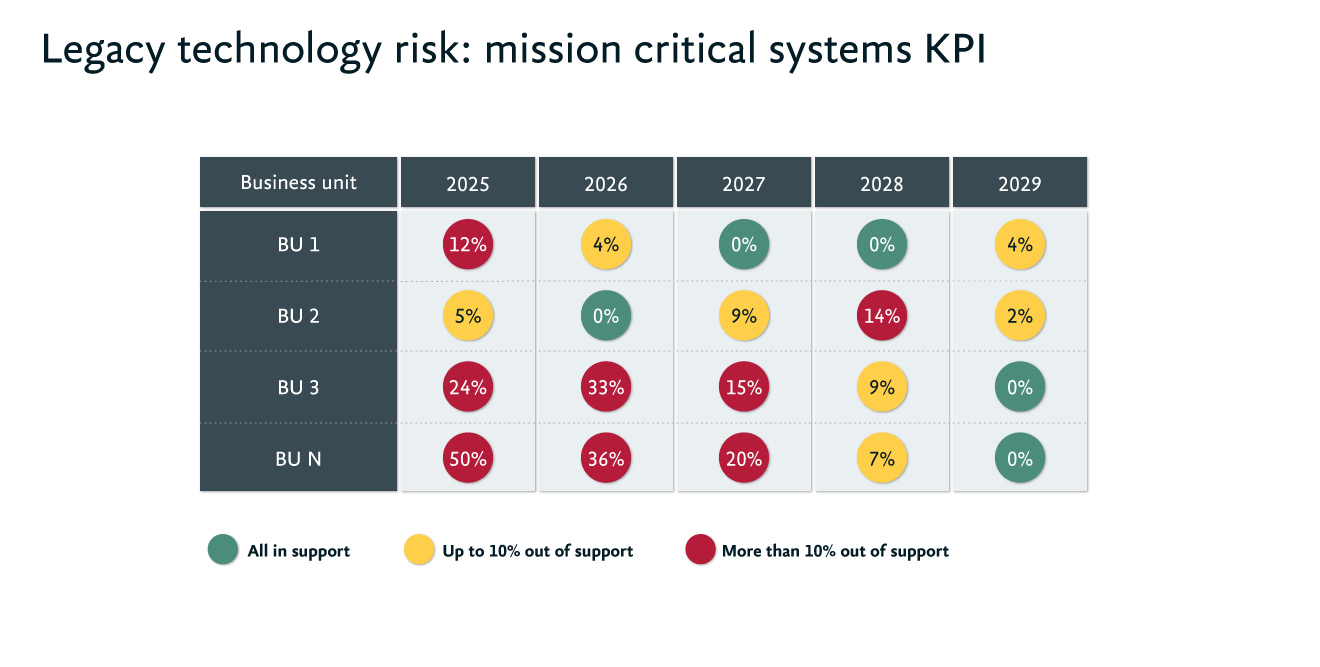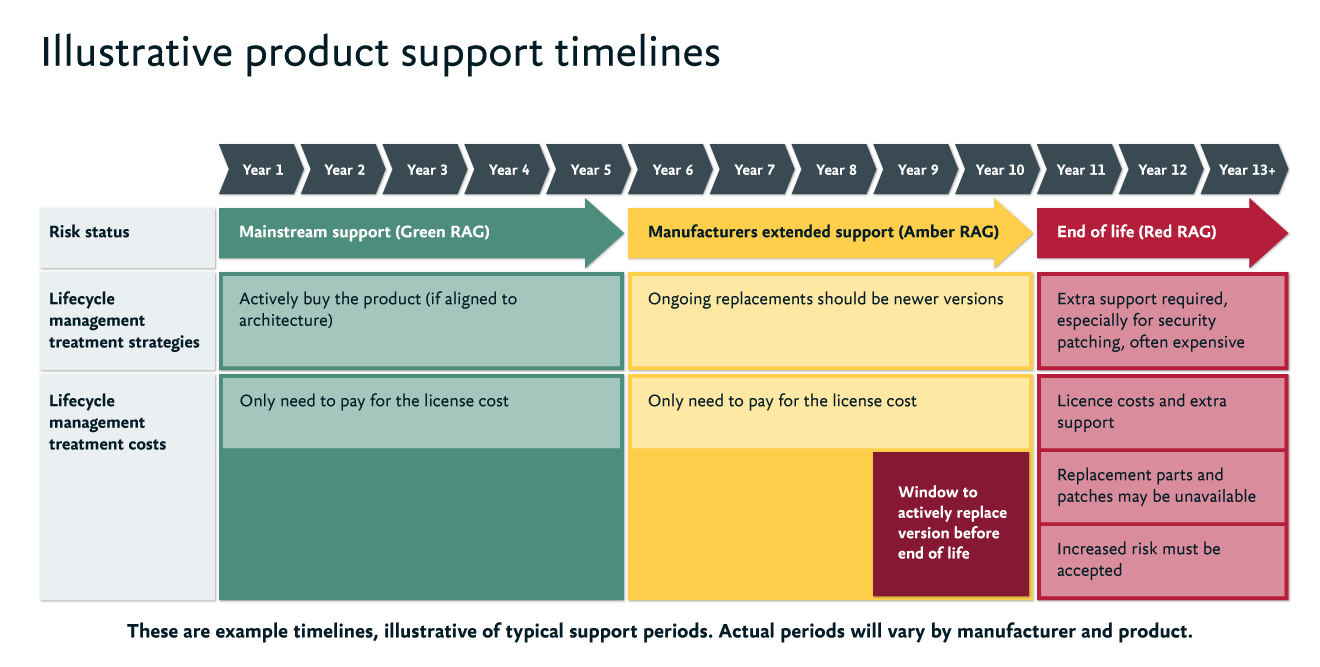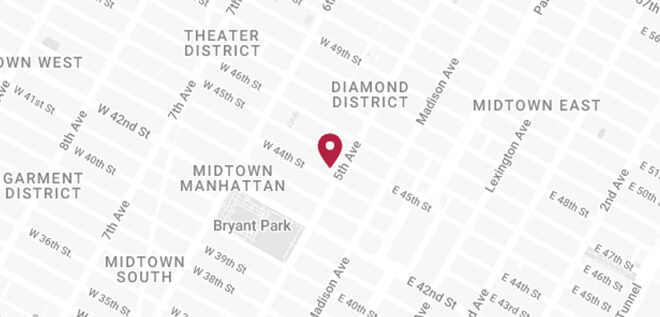Are you struggling to explain the tech obsolescence risks you face to a board that may not be proficient in technology? By demonstrating how deteriorating legacy technology could impede the delivery of critical operations or derail them if it fails, you can secure the leadership understanding and buy-in needed to sustain and modernize your estate. The key is anchoring your investment case in clear, credible and compelling data.
In previous articles in this series, we’ve looked at how to move from reactive firefighting when systems go wrong to a proactive roadmap of programmed replacement and modernization.
Investment targets are informed by hard data rather than hunch or tech hype.
Your enterprise architecture and underlying operating model are geared to driving innovation and boosting customer satisfaction, rather than simply keeping the lights on.
Partnerships with software vendors and service providers augment your capabilities and help secure key talent, while protecting against tech breakdown and obsolescence.
Gaining leadership buy-in: misconceptions and missed opportunities
The big question is does your board get it? There are a huge number of moving parts within your legacy estate and potential trade-offs to be factored into modernization plans. The choices can be daunting. What applications and supporting systems do you prioritize for investment? How can you boost your capabilities – talent as well as tech – while making the most effective use of finite resources?
The leadership teams making the ultimate investment decisions are likely to be entrepreneurs, politicians or experts in their field. Although an increasing number have tech backgrounds, they’re still in the minority. Board members may therefore lack the tech know-how to understand the opportunities and risks within your legacy estate or appreciate the impact on your strategic goals.
Tech decisions may also be governed by a ‘safety first’ mentality. In particular, leadership teams may prefer to make do and mend rather than committing to what they might see as needlessly disruptive and expensive transformation. But tech lifespans can only be prolonged for so long before the support costs and risk of failure become unsustainable.
Another common misconception is that an organization’s systems demands ares too distinctive or vulnerable to security breaches to use standard tech. This is quite understandable, especially when critical national infrastructure is at stake. But even here, all but a few unique, unsupported or high-risk systems can be bought in from Software-as-a-service (SaaS), Infrastructure-as-a-service (IaaS) or Platform-as-a-service (PaaS) providers. The results can boost systems agility and ensure access to the required talent and tech, while freeing up in-house development teams to focus on genuinely specialized capabilities.
Three ways to bring your board onside for technology transformation
How, then, can you craft a clear and compelling case for modernization? How do you translate all these complex considerations into an intelligible narrative that your leadership can build into their strategic decision-making? Three priorities stand out:
1. Make sure your data hits home
What gets measured gets done. A well-chosen set of key performance indicators (KPIs) can help to grab the attention of your leadership team and demonstrate how the state of your legacy estate could impact on organizational goals and performance. Timely and reliable KPIs can also help your board to prioritize investments as you look to target resources where they can make the most difference.
To shed light on the state of your legacy estate and its strategic impact, the KPIs should include a red, amber, green (RAG) ratings for risk. The traffic lights assess the obsolescence risk and target time for replacement for each tech component, particularly focusing on ‘mission critical’ capabilities.
To make these KPIs truly compelling, you can augment the RAG rating with data on what would happen if no action were taken. You could also introduce gamification by comparing the percentage of Code Red RAG ratings across different areas of your organization and communicating this to divisional chiefs. This is likely to make them more inclined to advocate for the required funding.

2. Raise awareness of obsolescence risks
In our experience, boards want to understand the technology your organization uses, especially when this is presented in a relatable strategic context.
Key concepts to introduce during education and awareness sessions include technology lifecycle management. Drawing on the RAG rating described earlier, lifecycle management tracks how much time applications and the tech stacks upon which they run have remaining before they become unsupported, at risk of deterioration and ultimately in need of replacement.
For many boards, the lightbulb moment for lifecycle management is the realization that some of your organization’s core functions could be in jeopardy if they fail to take timely and decisive action.

3. Rethink technology transformation
The other key message to communicate is that modernisation no longer needs to be carried out in one costly, disruptive and potentially high-risk giant leap.
Rather, improvements can come gradually, drawing on the priorities and timings outlined in the tech lifecycle management and RAG ratings to set out a planned roadmap for targeted intervention and replacement.
Decisions for your board include helping to shape the enterprise architecture and operating model that govern how your tech needs are delivered in areas such as in-house hosting or outsourcing to service providers. It’s therefore important to embed tech lifecycle management into the decision-making DNA and performance management of your board. The factors to be considered go beyond tech. Boards will want to understand the implications for deployment of resources, how you work and how you keep pace with customer expectations.
It’s helpful to explain that this rolling program brings together two sets of priorities running side-by-side urgent tactical remediation in the short-term and a ‘new normal’ for the longer term, in which tech is managed as a portfolio in line with the target architecture.
Within the organization, it’s important to assign and mobilise champions for change. On a day-to-day level, priorities include explaining the vital importance of patches and upgrades, along with the risks if they are not applied in good time. As your organization looks to modernise its tech capabilities, your champions can also explain the strategic vision and guide colleagues during the transition to new ways of thinking about and working with tech.
Ready for the new normal
With your board onside, you can adopt a more informed, agile and strategically-aligned approach to modernization.
In the final article in this series, we look at how to use this board understanding and direction as a foundation for continuous portfolio management and optimization.
Let’s talk
We’re working with businesses across all sectors to help them sustain operations and cut through the complexities of legacy tech transformation. Contact us if you’d like to know more.










